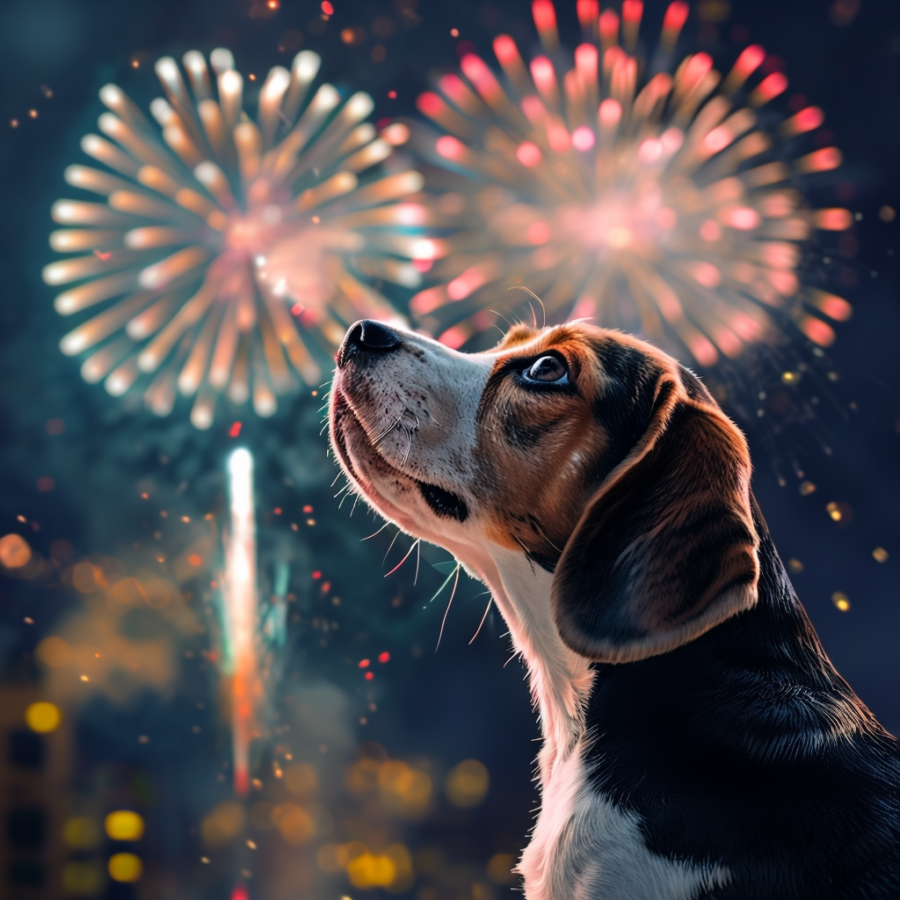A significant number of pet dogs exhibit fear-related behavioral problems, with noise fears, particularly during events like fireworks, being the most prevalent. Despite this common issue, there is a lack of objective evaluations of fear expression in dogs. Recent research utilizing owner-provided video recordings has shed light on fear-related behavior in dogs such as canine behavior during real-life firework situations, providing valuable insights for veterinarians and pet owners alike.
Study Overview: Evaluating Fear Responses
In a study that analyzed dogs’ behaviors during New Year’s Eve fireworks, researchers compared the recorded behaviors to those of the same dogs on a non-firework evening. Using Wilcoxon signed ranks tests, the study found that a backwards-directed ear position at the base of the ear was most strongly associated with the fireworks condition, with a notable effect size (Cohen’s d = 0.69). Additionally, durations of locomotion, panting, and other behaviors like vocalizations and hiding were assessed, revealing significant behavioral changes in response to the noise.
Individual Variability in Fear Expression
While the study provided compelling data, it also highlighted the importance of considering individual differences in fear expression. For instance, behaviors such as blinking, vocalizations, and hiding increased during fireworks but did not show statistical significance after correction for multiple comparisons. This variability suggests that not all dogs will exhibit the same fear responses, emphasizing the need for personalized assessments when determining an individual dog’s level of fear.
Prevention Protocols: Mitigating Fear Responses
Veterinarians can recommend several protocols to manage fear during fireworks:
- Use desensitization techniques by exposing dogs to low-volume firework sounds.
2. Employ counter-conditioning by pairing the sound with treats or playtime.
3. Creating a safe space, like a quiet room with familiar toys, can also reduce anxiety.
Integrative Treatment Options
Incorporating integrative treatment options can also benefit dogs experiencing fear during fireworks. Complementary approaches, such as acupuncture, herbal remedies, and nutritional supplements designed to promote relaxation, can provide additional support. Alternative therapies like pheromone diffusers and calming music have shown promise in alleviating anxiety. Collaborating with pet owners to develop a comprehensive treatment plan can enhance the dog’s emotional well-being during stressful events.
Conclusion
Understanding fear-related behavior in dogs during fireworks is crucial for veterinarians and pet owners. Veterinary professionals can improve the lives of dogs with noise fears by recognizing individual differences in fear expression. They can implement effective prevention protocols and integrative treatment options. Empowering pet owners with knowledge and resources creates a supportive environment. This ensures that dogs feel safe and secure during stressful situations.







